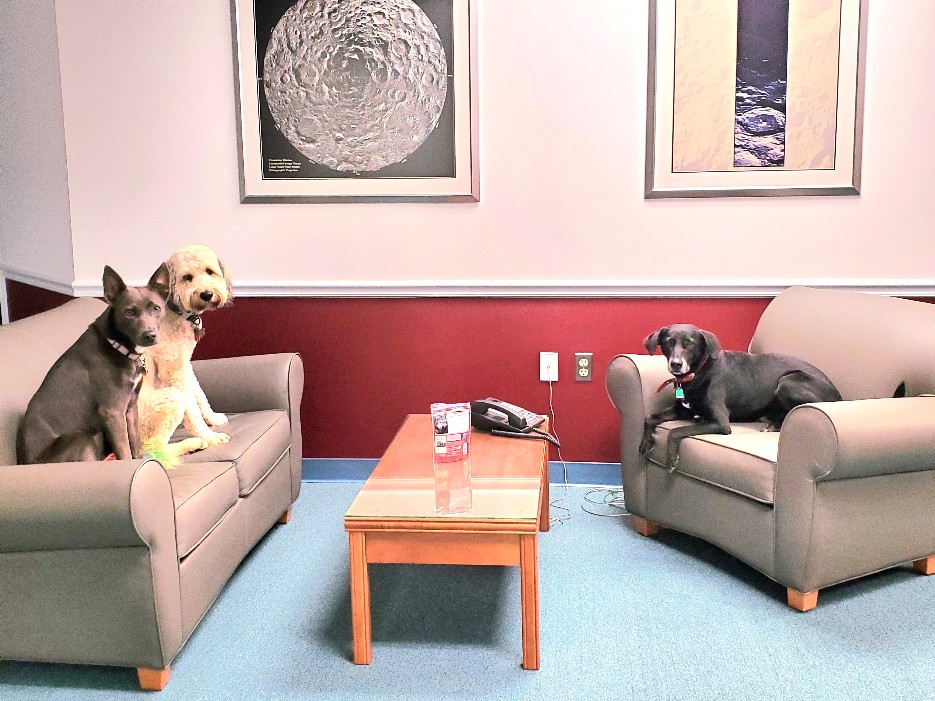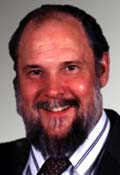Your Team of Experts
Test Director, Micro-optical systems, Space propulsion, Plasma physics, High energy laser physics, Satellite optical communications, and Pulsed power.
Chris Rollins, Ph.D., Chief Scientist

System Science, Radiometric Calibration,Space Instrumentation, Hyperspectral Imagery, Sparse aperture arrays, Optical Design.
James N. Caron, Ph.D., Principal Research Scientist
Sparse aperture imaging, polarimetric imaging, acoustics, advanced image processing, imaging field tests, instrumentation, nondestructive evaluation of materials, and laser-based ultrasound.
Duane Simonson, Ph.D., Principle Scientist, Material Science, Specialized Coatings, Contamination Specialist
Tai Ragan, Test Engineer, Systems Engineer, Instrumentation
Jeff Ashbaugh, Optical Engineer
Biographies
Jemma F. Kline, Principal Research Scientist, Vice President 
Jemma Kline is Vice President of RSI. She currently serves as the lead systems engineer for the imager on the GeoXO next-generation geostationary weather satellite, and previously served as the Post Launch Test Director of the NOAA G-17 satellite. Prior to her work on the GeoXO and GOES-R Flight Projects, Ms. Kline served as Principal Investigator on twenty research projects ranging from plasma physics to microtechnology. Highlights include development of an active noise cancellation microspeaker for the Joint Strike Fighter, fabrication of microfabricated skin friction sensors for hypersonic Air Force wind tunnels, collaborative work with Princeton University on plasma aerodynamics, and leading the Compact Micro-Torus eXperiment (CMTX) for NASA. Ms. Kline has experience with micro-optical systems, space propulsion, plasma physics, high energy laser physics, satellite optical communications, and pulsed power. Projects in-house at RSI and on-site at NRL have included development of a family of electrothermal thrusters, a plasma diagnostic system, micromachined optics, electron beam windows, micromachined ion optics, an X-ray multichannel detector for the NOVA laser fusion facility, an atmospheric pressure plasma generator, and a quantum well modulator optical link.
Dr. Chris Rollins, Chief Scientist
Education: Ph.D., Physics, Northeastern University, 1984 M.S.,
Physics, Northeastern University, 1980 B. A., English Literature,
University of Rochester, 1976
Dr. Chris Rollins is Vice President and Chief Operating Officer of Research Support Instruments (RSI). Dr. Rollins joined RSI in 1992, to collaborate with the Naval Research Laboratory (NRL) on the Clementine lunar spacecraft project. Since that time he has been active in several spacecraft programs including TICAS, NRL-HSI, NEMO, RIT, TacSat-4, JMAPS, and GOES-R; he has worked in all phases of spacecraft development, from initial design through launch and operations. For Clementine, Dr. Rollins performed systems engineering and functioned as a key technical liaison between NRL and LLNL. From February 1995 to June 1996, Dr. Rollins participated in the TICAS tactical imager architecture study. From June 1996 to March 2002, Dr. Rollins worked on the Navy EarthMap Observer (NEMO) satellite. Dr. Rollins authored the baseline hyperspectral payload design for the NEMO RFP, performed systems engineering studies, and conducted performance tests on the NEMO instruments. From September 1996 to March 1997, Dr Rollins worked on the NRL-HSI hyperspectral satellite. For this activity, he developed the baseline optical design. From June, 1997 to October 2003 , Dr. Rollins worked on the Revolutionary Imaging Technology (RIT) program in sparse-aperture space-based imaging. For the RIT program he led the development of a 16-channel multicolor camera, and participated in optical analyses and test-bed development. From October 2003 to March 2010, Dr. Rollins worked on the NRL Surrogate Sensor Experiment (SSE) program which evaluated large format (16 Megapixel and larger) imaging arrays for remote sensing applications. From January to June 2004, he worked on the AIRIS Wide Area Detector (AWAD) program. Under AWAD, Dr. Rollins designed and developed a wide-angle infrared beam expander. From February 2005 to July 2007, he worked for the NRL TMA program and its descendent, TacSat-4, performing system trades and analyses for tactical satellite payloads. From August 2005 to December, 2011, Dr. Rollins supported the JMAPS program as JMAPS Systems Scientist. From June 2006 to present Dr. Rollins supported the GOES-R/ABI flight project as a detector, calibration, and instrument systems engineering expert. Dr. Rollins is currently the ABI Flight Project Instrument Systems Engineer. He also represents the ABI Flight Project on the GOES-R Calibration Working Group.
From 1991 to 1992, Dr. Rollins worked at Northeastern University, both in detector design for the experimental high-energy physics group, and as a Physics lecturer. Concurrently, he worked with Radiation Monitoring Devices (RMD), Watertown, MA, in the areas of avalanche diode development for Supercollider applications, and in atmospheric acoustic scattering analysis for White Sands Missile Range.
From 1984 to 1990, Dr. Rollins worked at RSI's parent company, Physical Sciences Inc. (PSI), as Group Leader, Pulsed Laser Applications. Dr. Rollins was the Principal Investigator for PSI efforts under the SDIO Laser Propulsion Program, exploring laser thermal propulsion for ground to orbit launches of small payloads. Dr. Rollins also participated in the Hardening Data Base and ALARM laser-resistant-materials development programs and functioned as a consultant to Defense Nuclear Agency and Los Alamos National Laboratory on laser supported detonation waves.
Dr. James N. Caron, Principal Research Scientist,
Dr. Caron is the supervisor for our NRL On-site employees. He received his M.S. (1995) and Ph.D. (1997) in Physics from the University of Delaware, Newark, DE. During graduate study and  post-doctorate work, Dr. Caron was the main researcher in the UD Laser Acoustics Lab producing seven years of experience in acoustics, optics, and electronics. He researched, designed, constructed, and operated the laser-based ultrasonic systems at UD. This includes designing and building photodetectors, servo circuits, filters, and amplifiers suitable for laser ultrasonics, operating and maintaining the Nd:YAG lasers, maintaining the laser ultrasonic system, and determining the course of the research. In this time, he invented Gas-coupled Laser Acoustic Detection. Since his arrival at RSI, Dr. Caron has been researching a possible alternative to space-borne telescopes for the Naval Research Laboratory in Washington, DC; developing improved processing techniques for digital videos; and developing image-based methods to characterize laser beams. To meet the project goals, he has developed a large ensemble of novel image processing techniques, handling tasks such as image registration, spectral signature identification, polarimetric imaging, super-sampling, and most notably blind deconvolution. His SeDDaRA blind deconvolution technique has been named Advanced Imaging Magazine's 2004 ``Imaging Solution of the Year''. His recent paper in AIP Advances demonstrated for the first time super-resolution imaging for a macroscopic imaging system.
post-doctorate work, Dr. Caron was the main researcher in the UD Laser Acoustics Lab producing seven years of experience in acoustics, optics, and electronics. He researched, designed, constructed, and operated the laser-based ultrasonic systems at UD. This includes designing and building photodetectors, servo circuits, filters, and amplifiers suitable for laser ultrasonics, operating and maintaining the Nd:YAG lasers, maintaining the laser ultrasonic system, and determining the course of the research. In this time, he invented Gas-coupled Laser Acoustic Detection. Since his arrival at RSI, Dr. Caron has been researching a possible alternative to space-borne telescopes for the Naval Research Laboratory in Washington, DC; developing improved processing techniques for digital videos; and developing image-based methods to characterize laser beams. To meet the project goals, he has developed a large ensemble of novel image processing techniques, handling tasks such as image registration, spectral signature identification, polarimetric imaging, super-sampling, and most notably blind deconvolution. His SeDDaRA blind deconvolution technique has been named Advanced Imaging Magazine's 2004 ``Imaging Solution of the Year''. His recent paper in AIP Advances demonstrated for the first time super-resolution imaging for a macroscopic imaging system.
Dr. Duane Simonson received his Ph.D. in Organic Chemistry from the University of Virginia. He currently works as a Chemist/Materials Engineer at NASA and the US Naval  Research Laboratory through Research Support Instruments, Inc. in Lanham, MD, and has contributed to the successful launch of several DoD payloads.
Research Laboratory through Research Support Instruments, Inc. in Lanham, MD, and has contributed to the successful launch of several DoD payloads.
From 2002 to 2014 he was a Research Chemist at the US Naval Research Laboratory Materials Science and Technology and the Plasma Physics Division. His experience includes the design and synthesis of polymers and nanocomposite materials for aerospace, CBRNE detection, optics coatings, decontamination, electronic and mechanical parts inspection, EM railgun barrel longevity, and fabrication and testing of lightweight body armor and structural composites. He has published journal articles and book chapters in chemical sensing, 3D printing of circuits and microwave antennas, polymer synthesis and nanocomposites, and has several US Patents. In 2011 he was elected to the Society of Plastics Engineers (SPE) Engineering Properties & Structure Division Board of Directors and has been a member of the ACS, ASME, DEPS, MRS, SAMPE, SPE, and SPIE.
